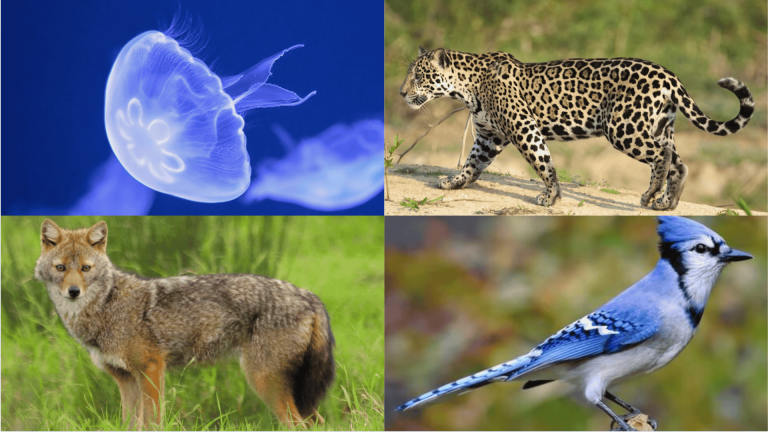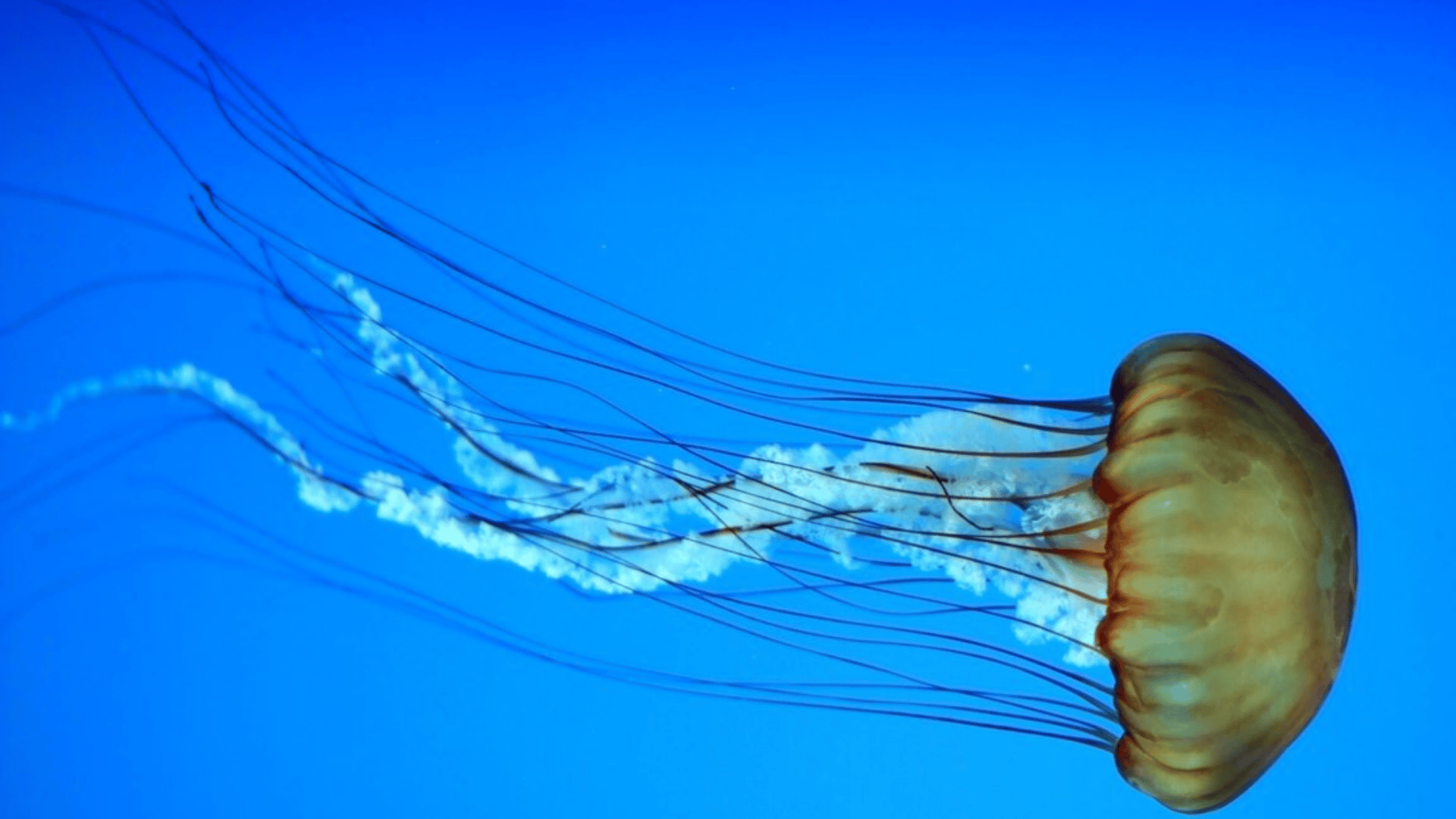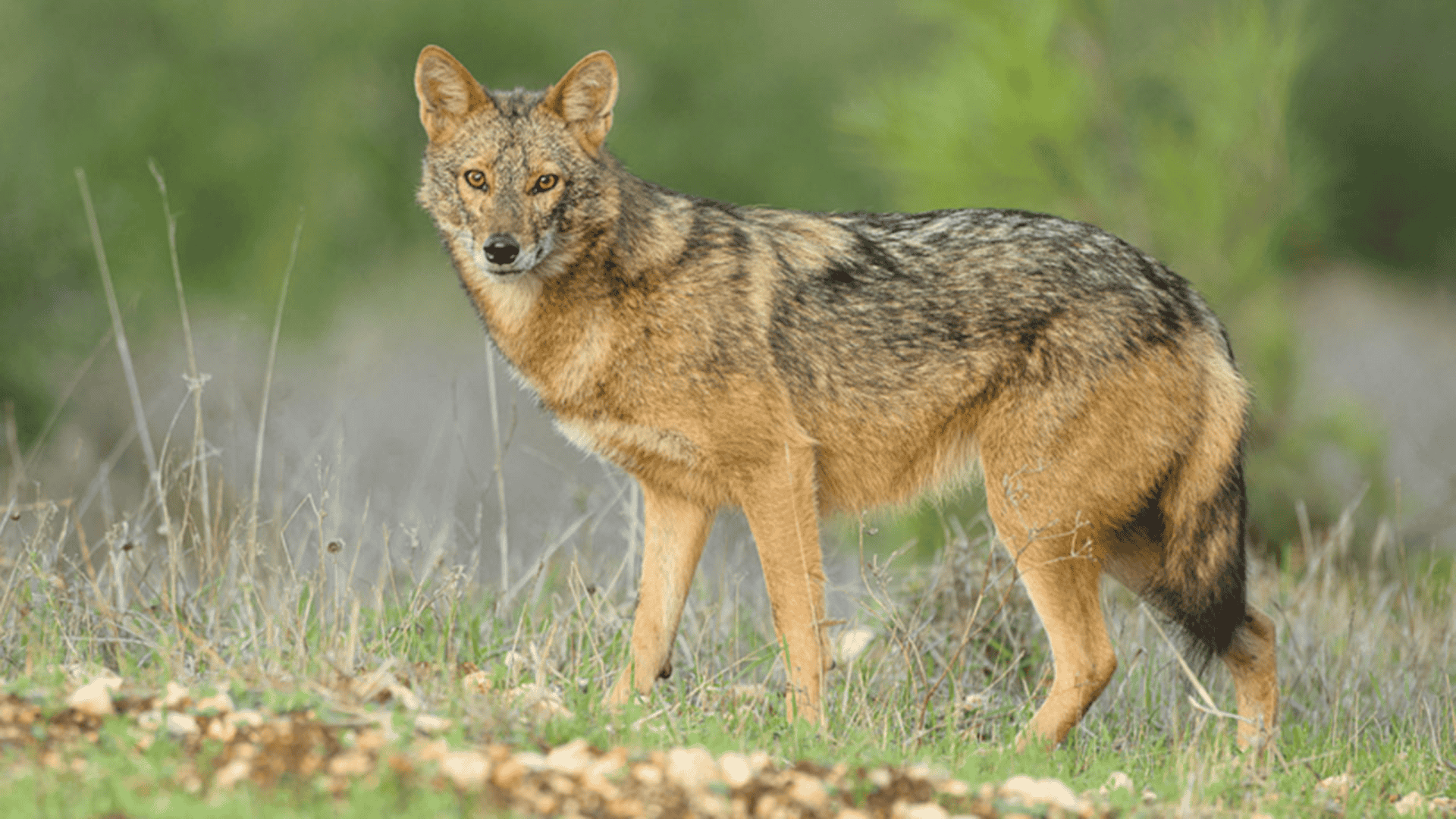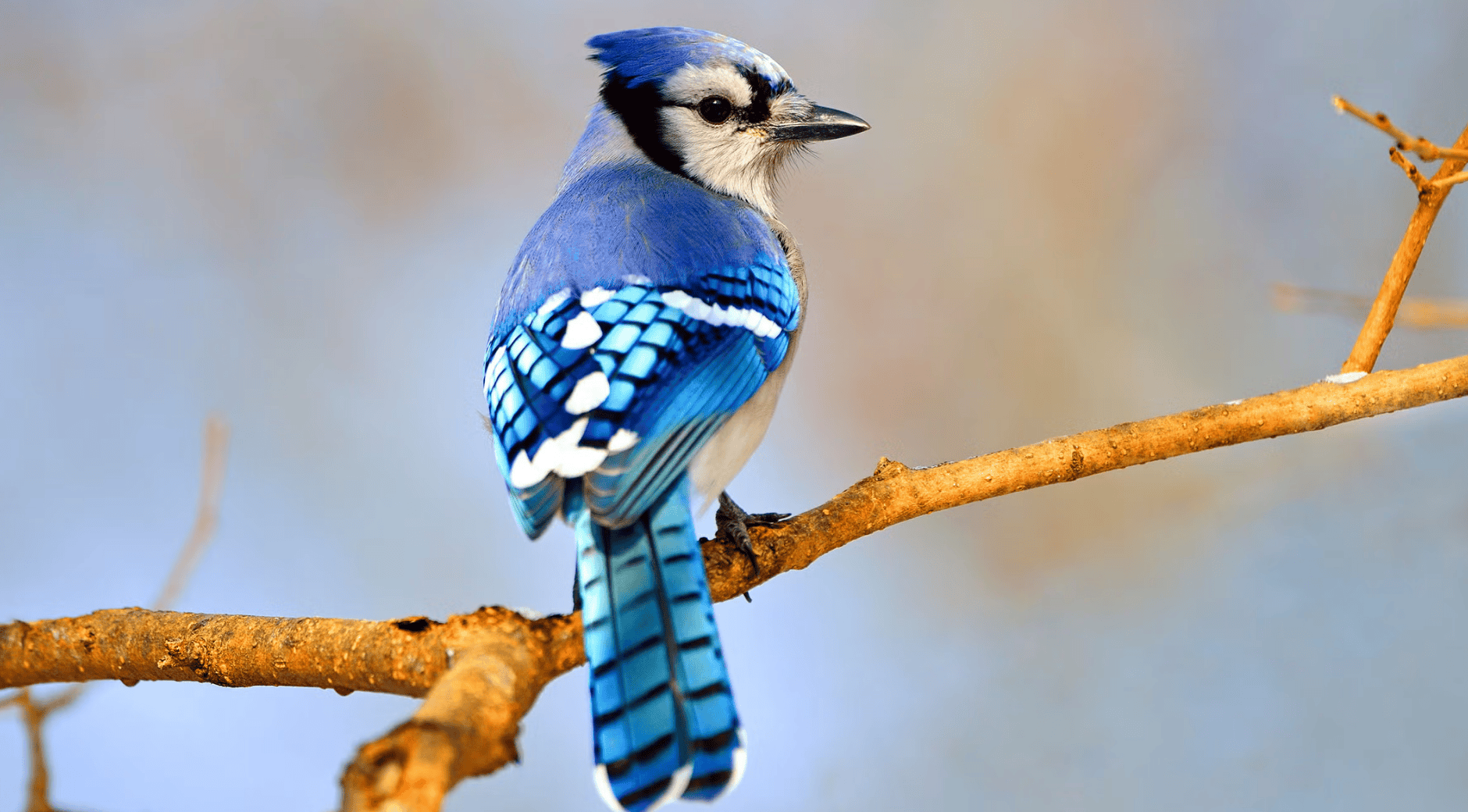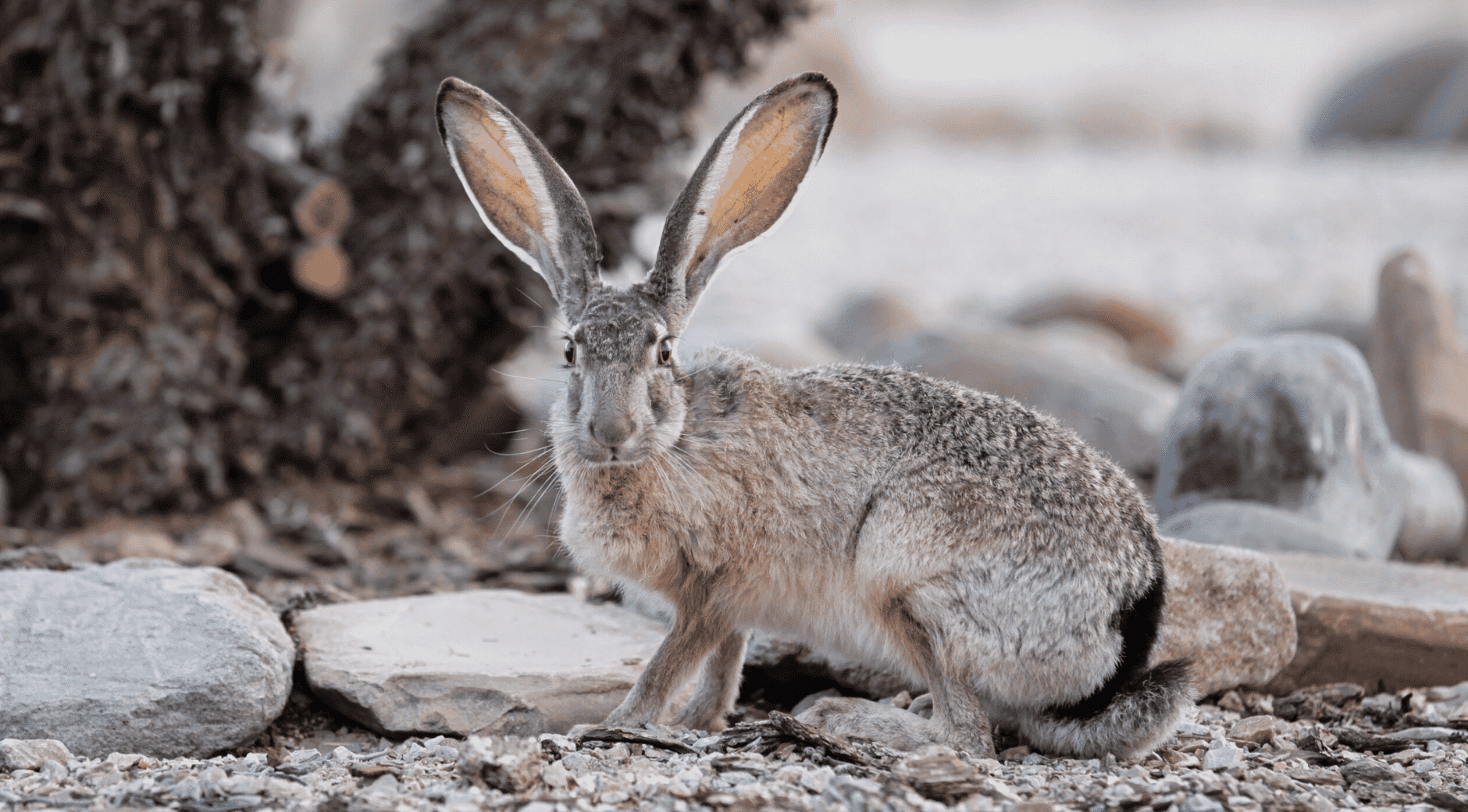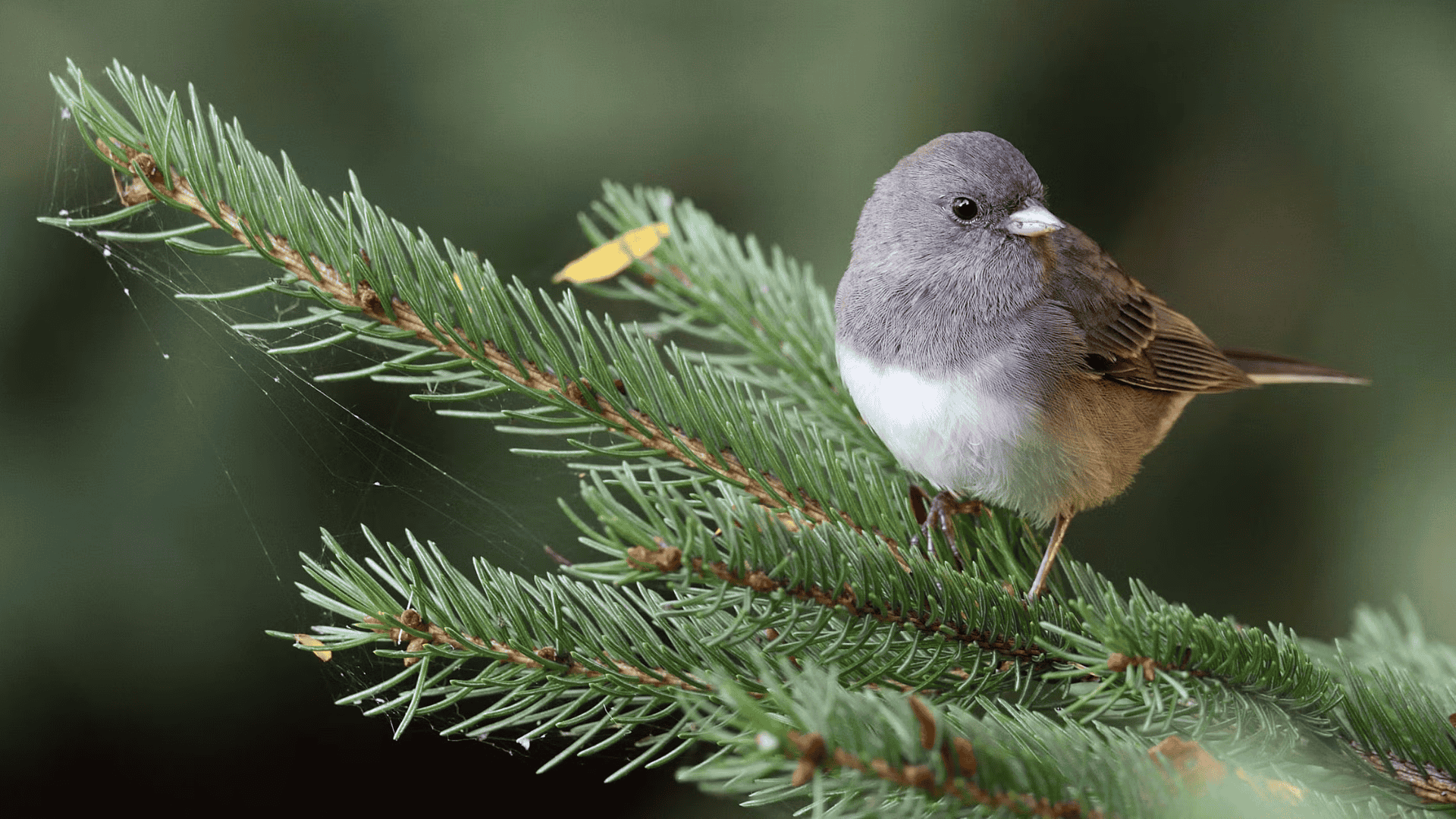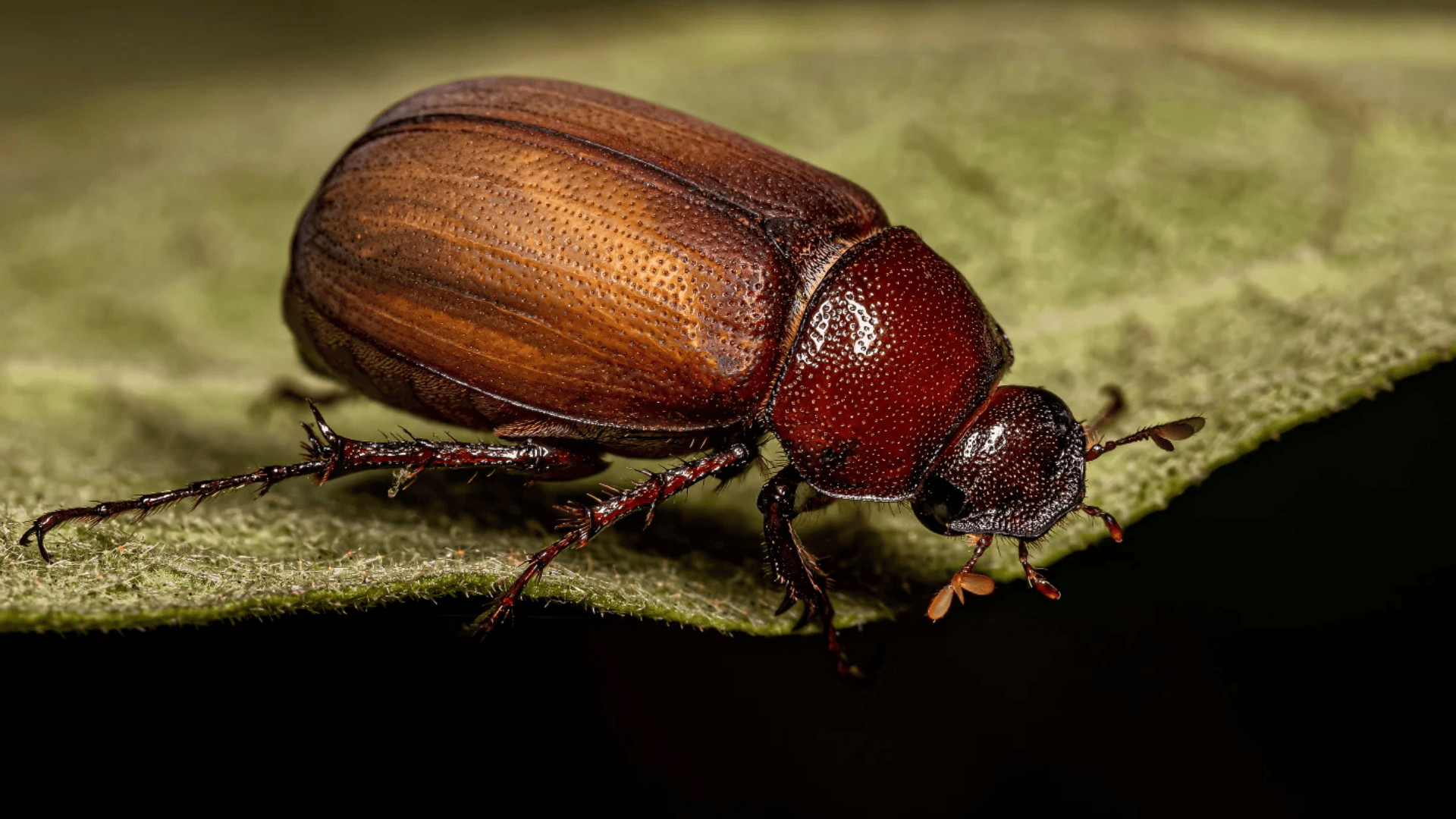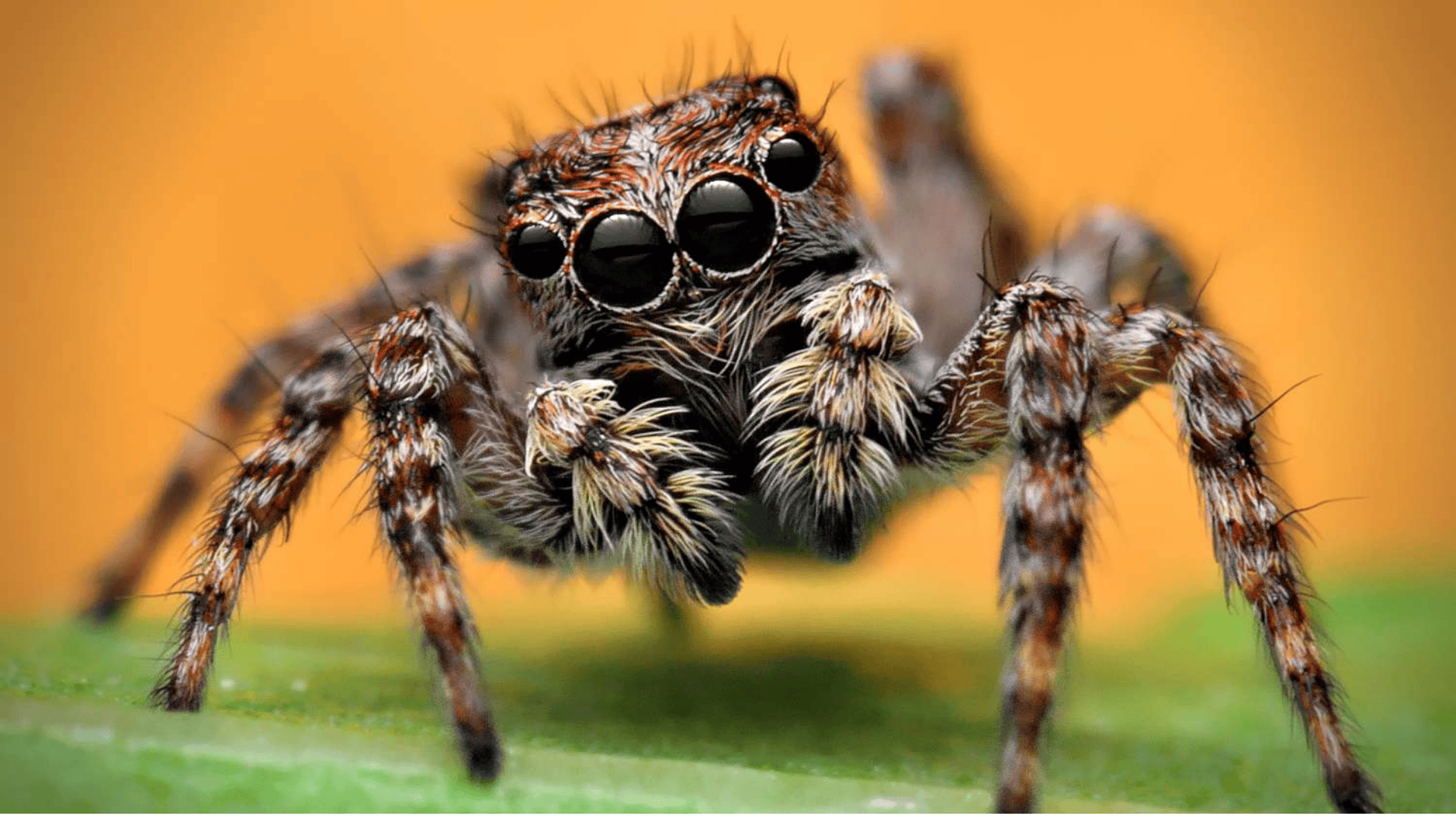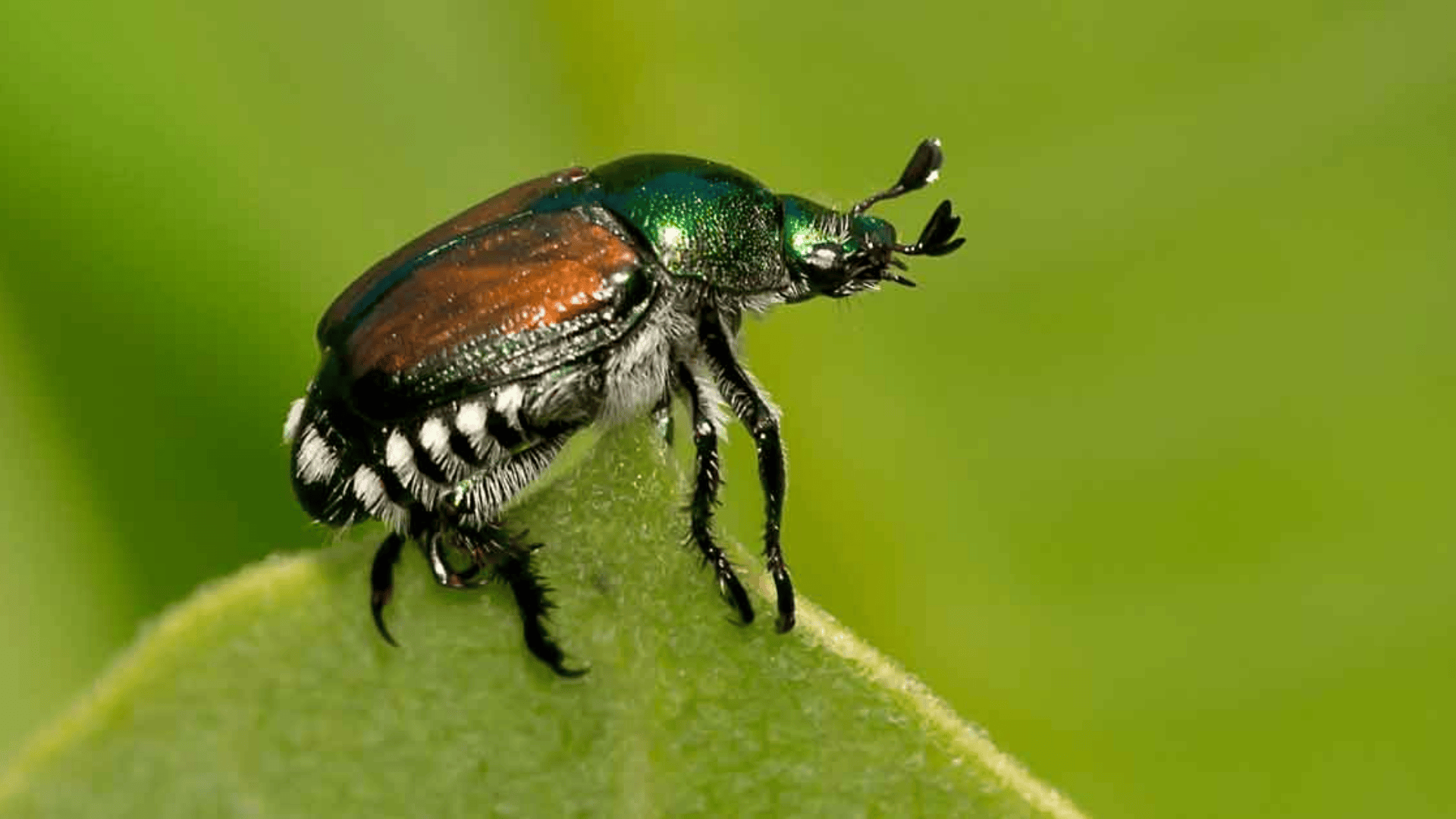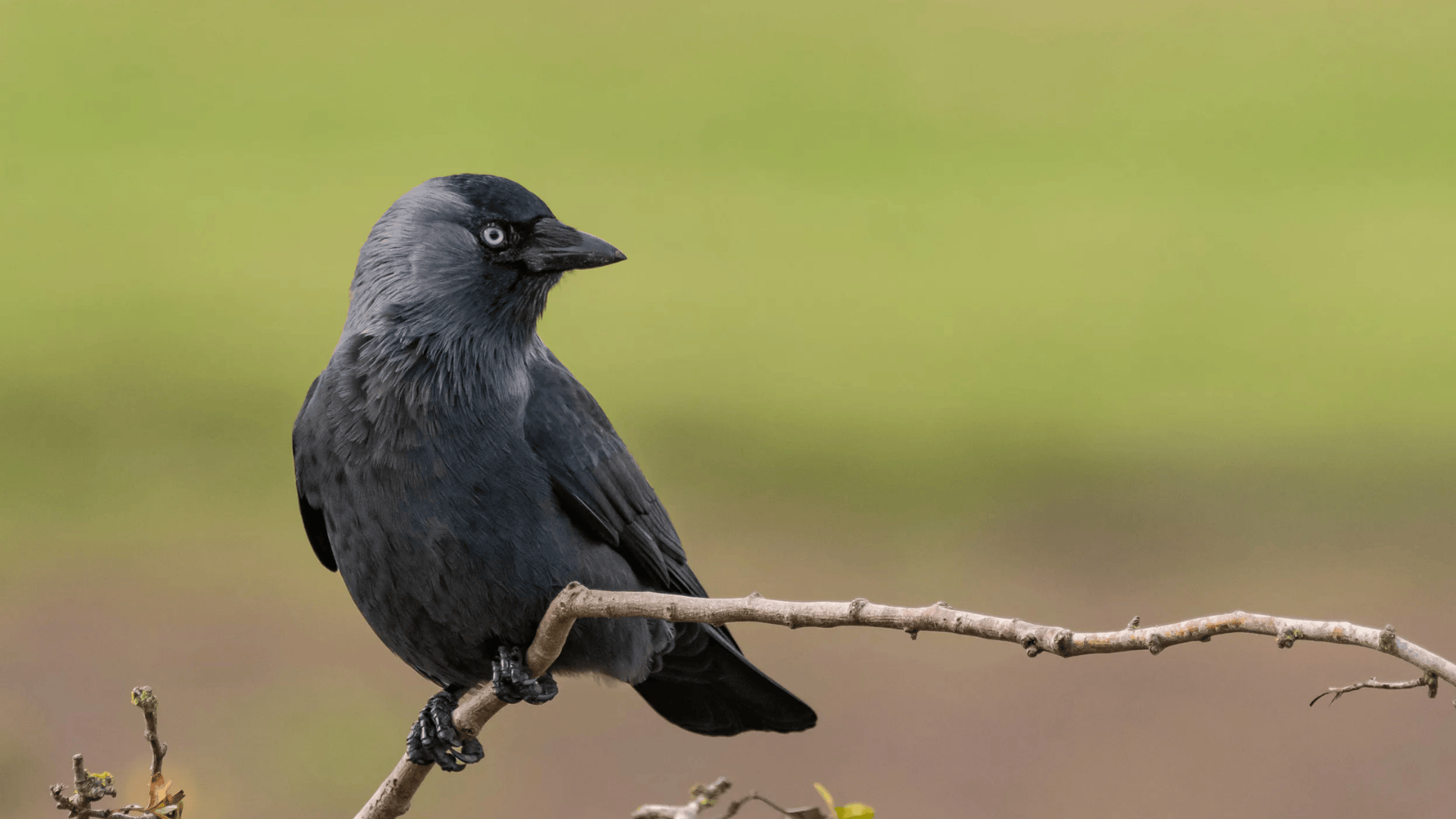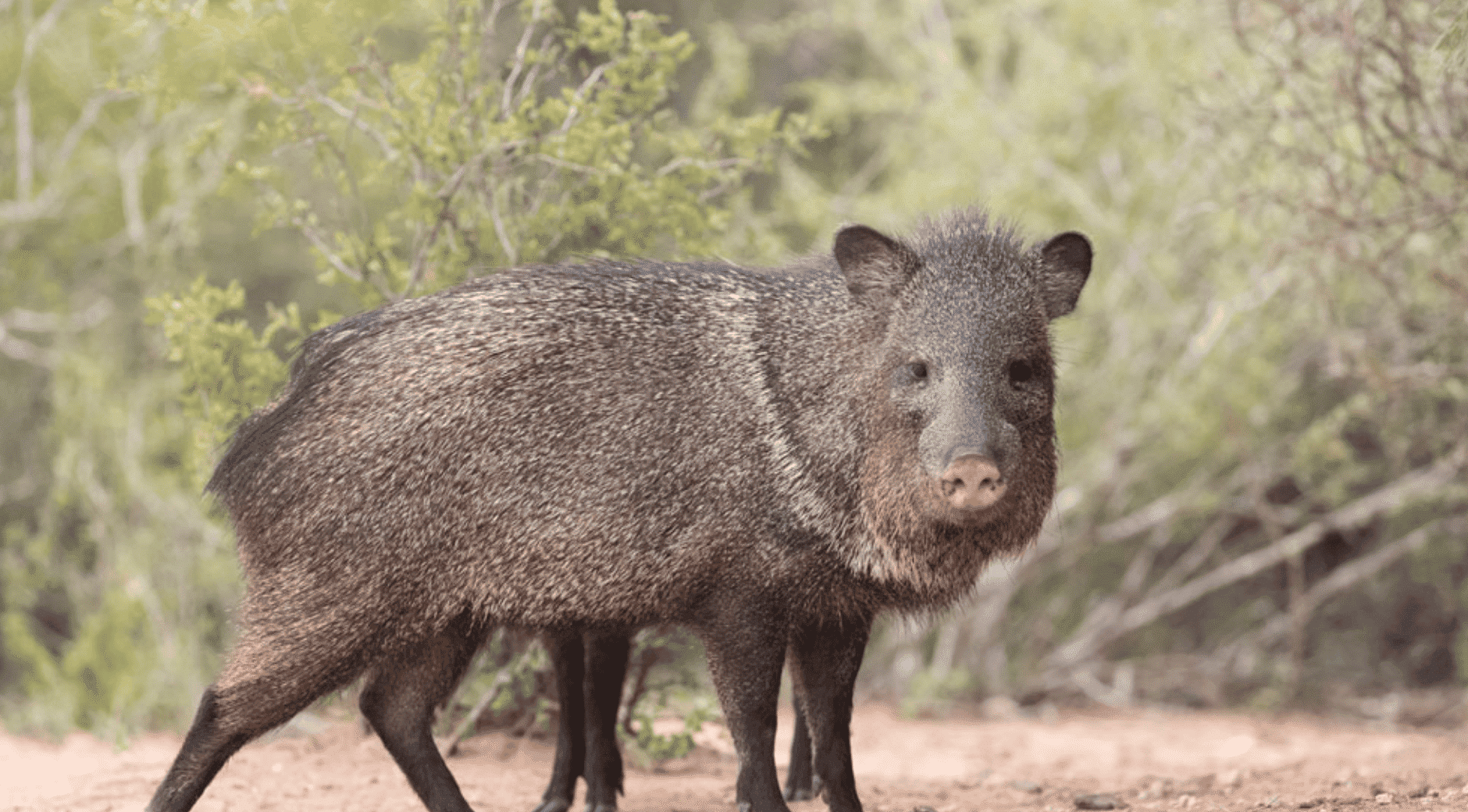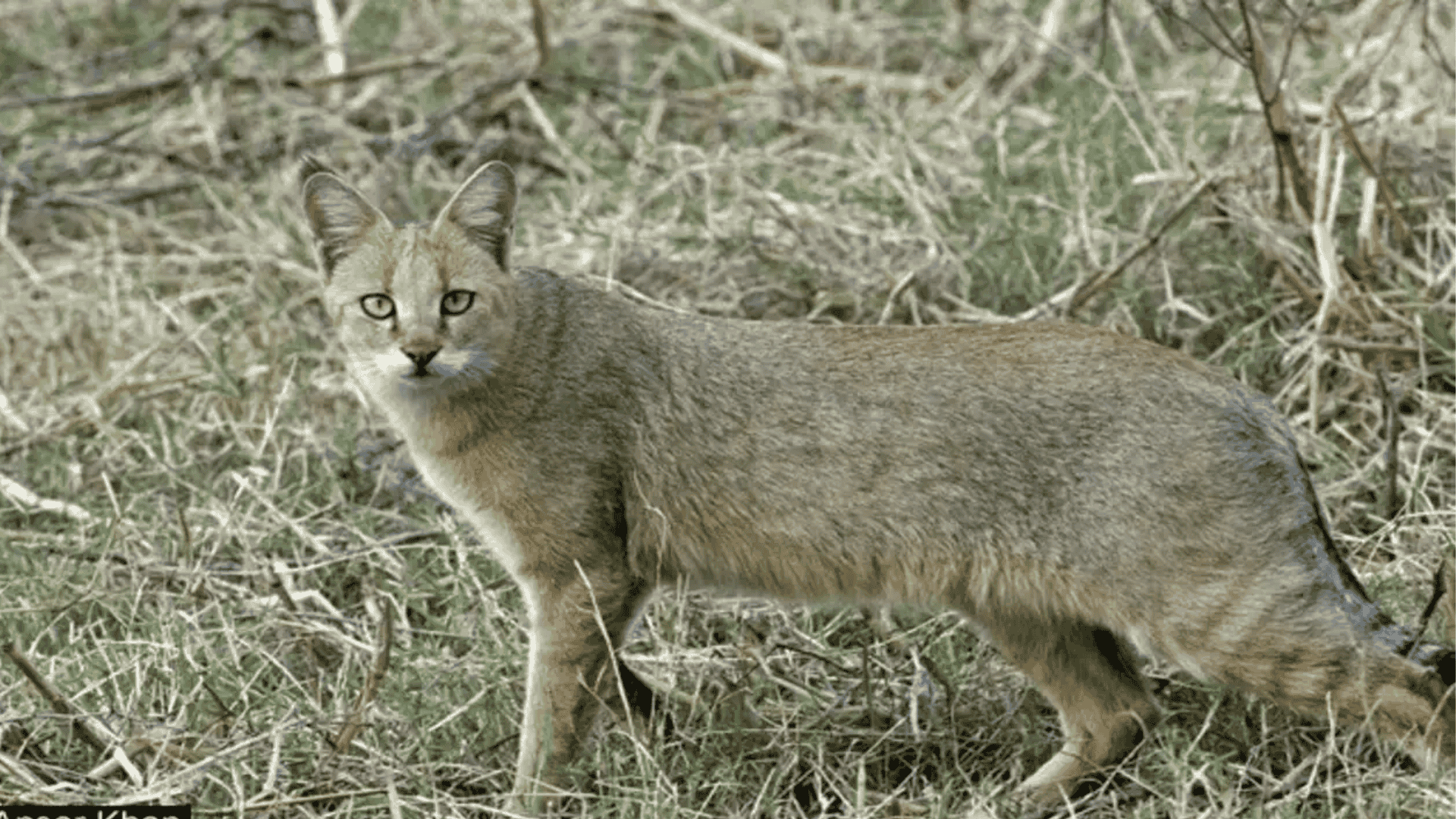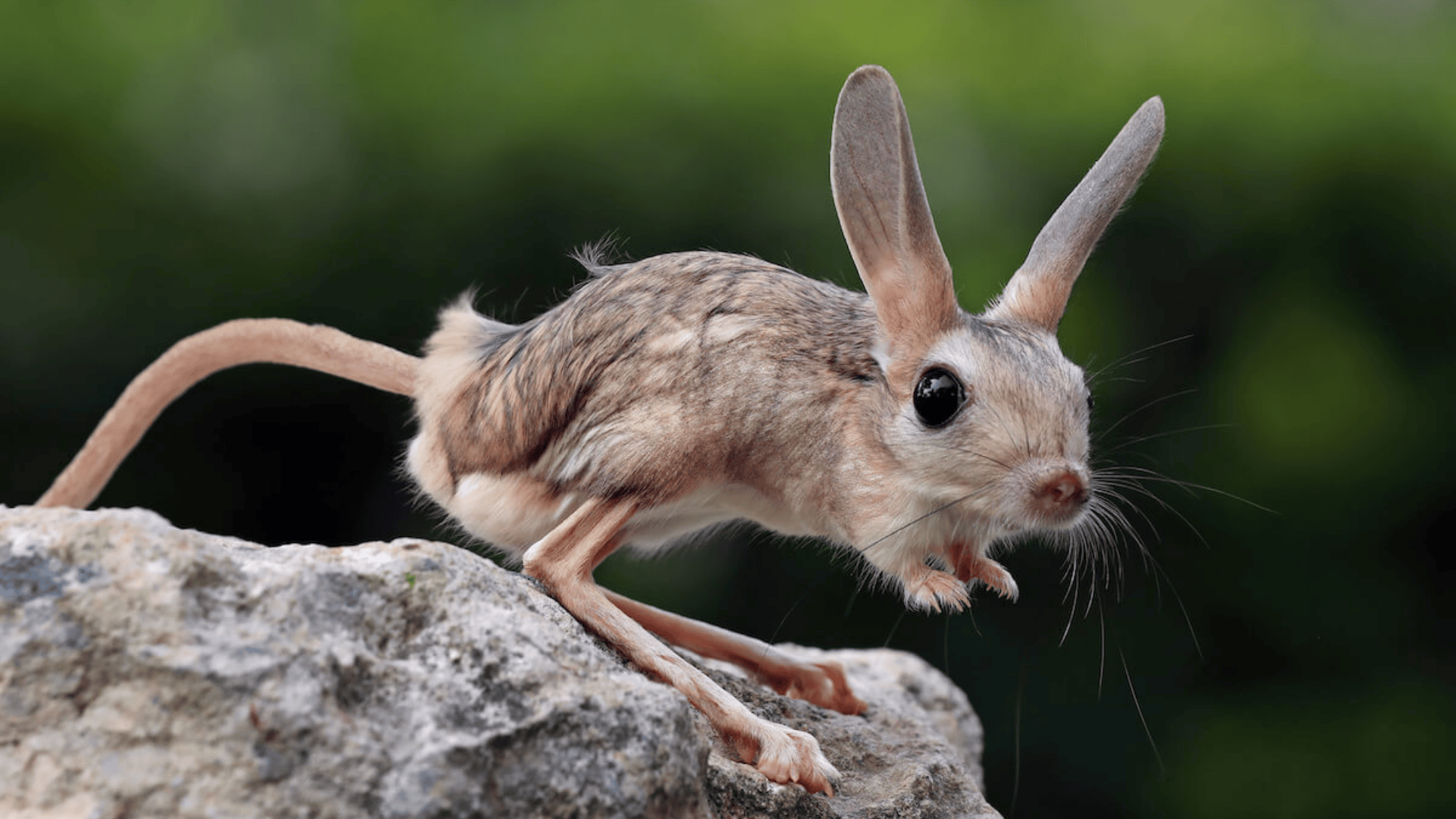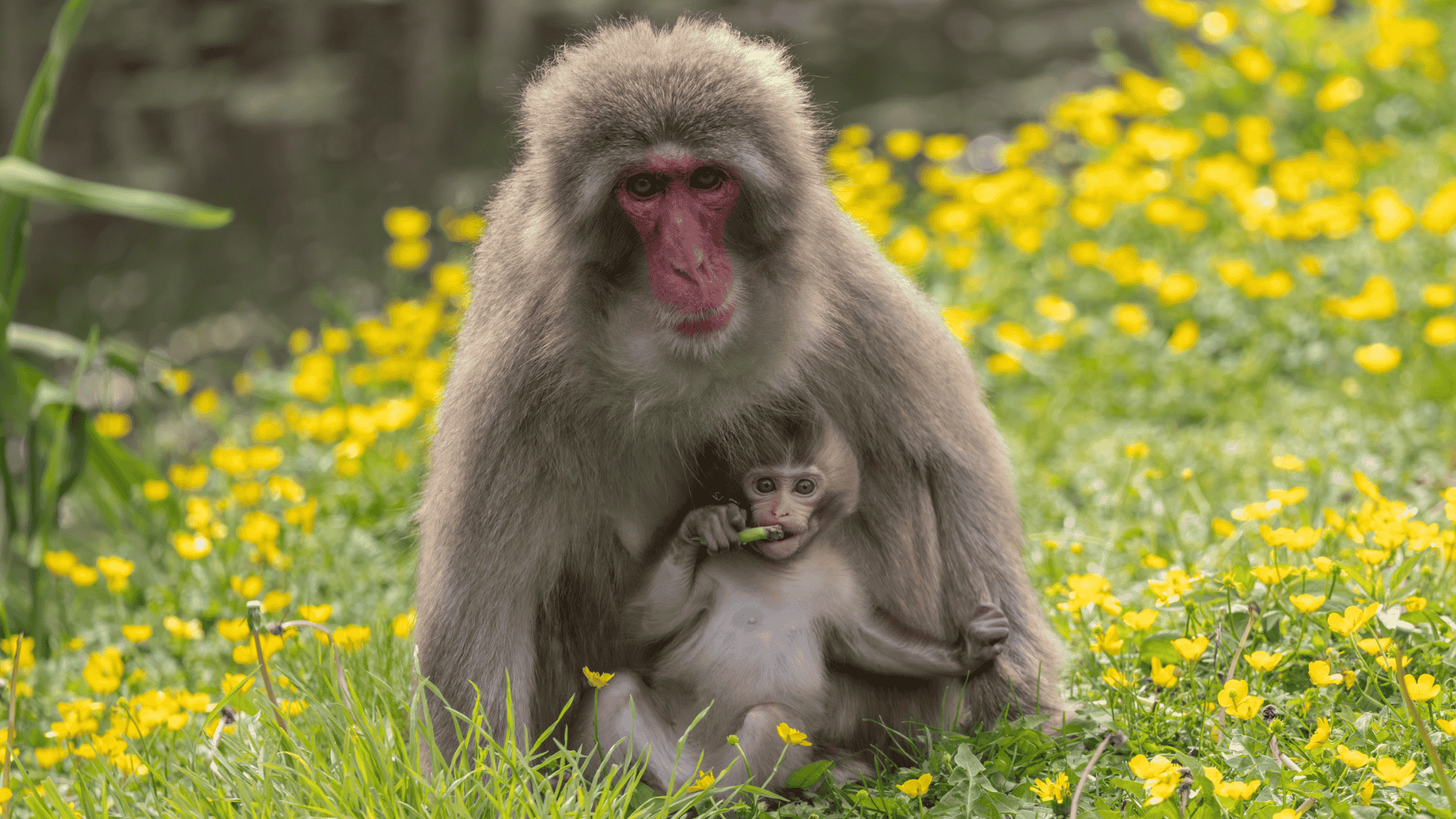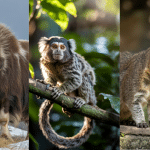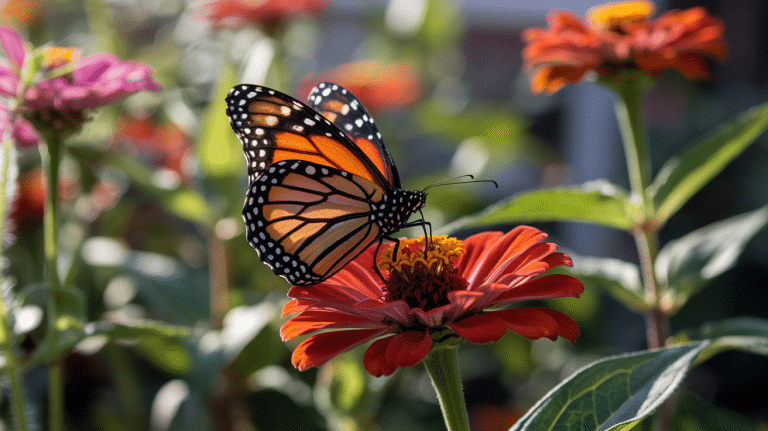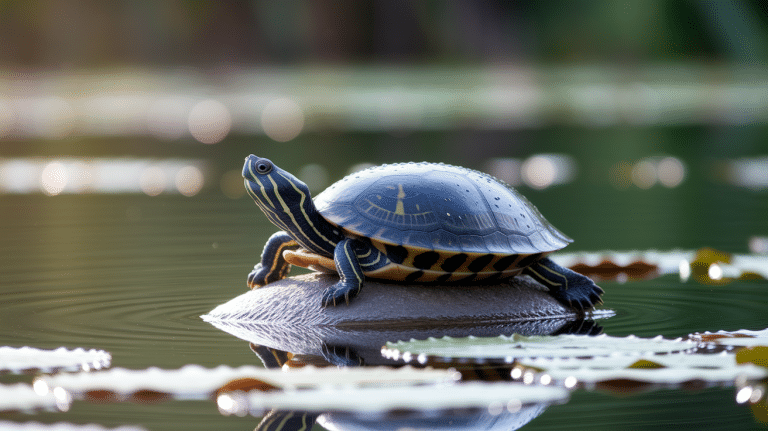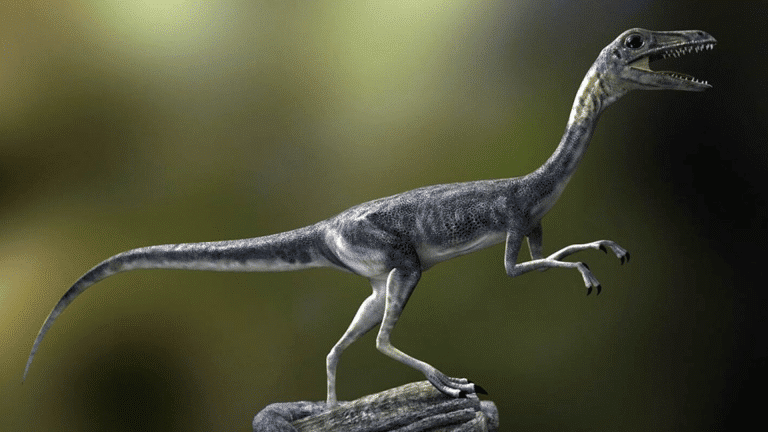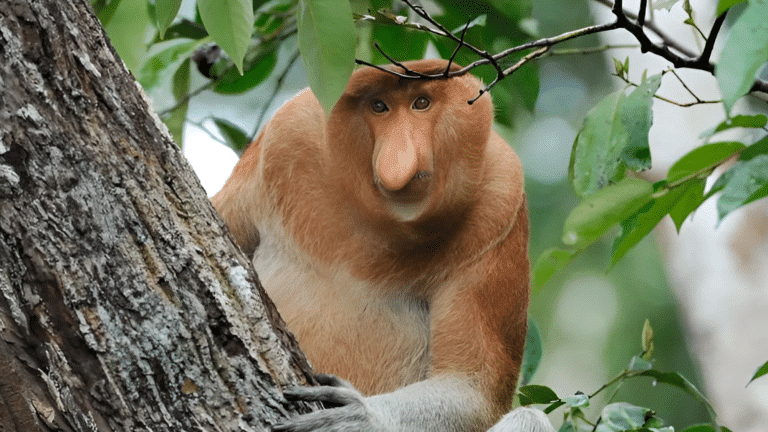Get ready for a wild ride through the world of animals that start with the letter J! From jumping jackrabbits to jazzy jaguars, these creatures are about to bring excitement to your day.
Nature has some amazing animals hiding behind this magical letter. Imagine meeting creatures that can leap higher than a basketball player, swim faster than a speedboat, or roar louder than a rock concert.
J-animals inhabit nearly every ecosystem on Earth. They range from fierce predators like jackals to gentle jumpers like jerboas.
Some of these animals live in deep forests, while others call deserts or oceans home. The animal kingdom’s J-section holds more surprises than most people imagine!
Popular Animals that Start with the Letter J
Here are some spellbinding creatures from around the world whose names begin with the letter J.
1. Jaguar
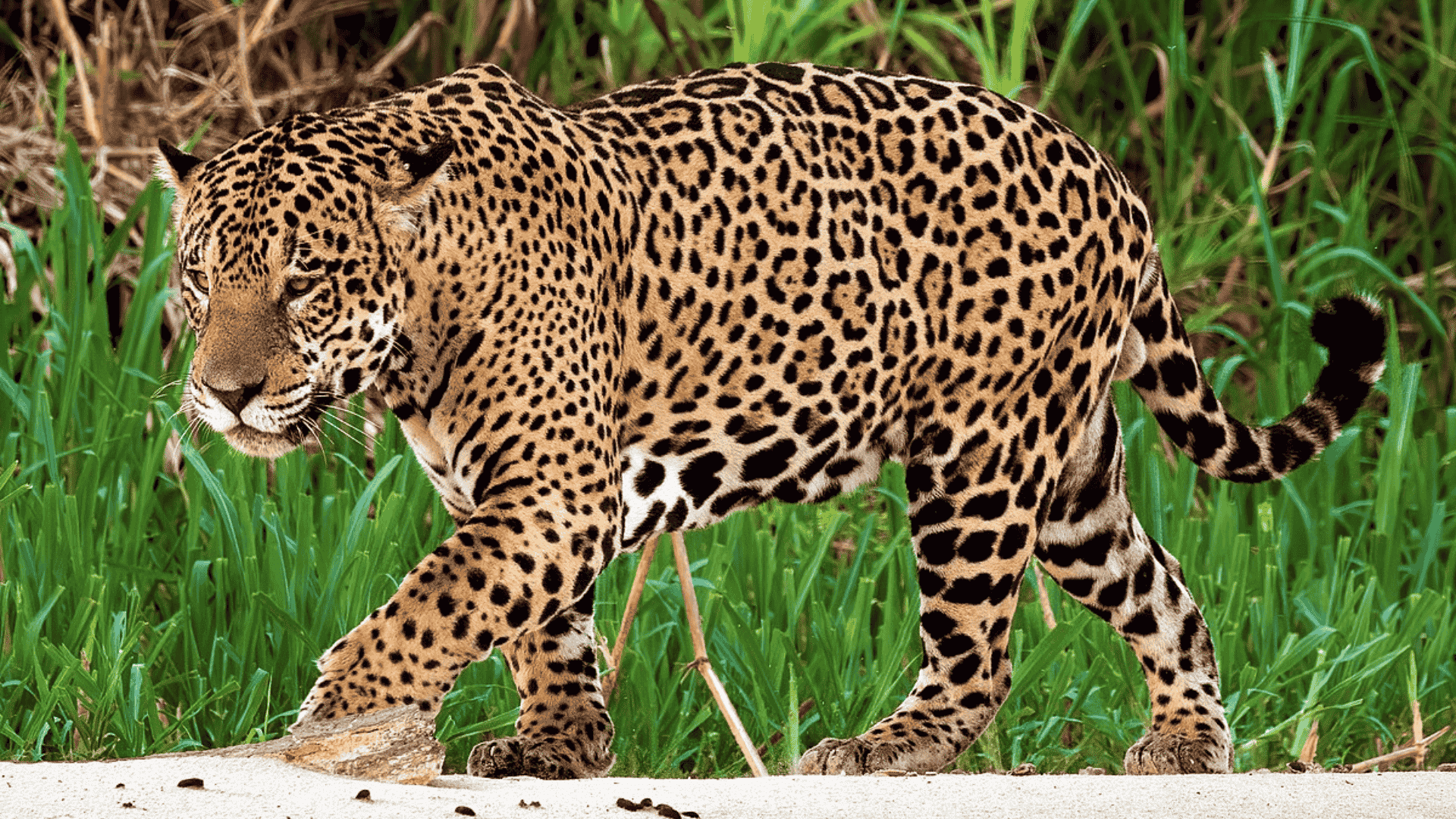
The jaguar is a powerful big cat native to the Americas, known for its striking golden coat with black rosettes. It is a skilled swimmer and apex predator.
- Region of Habitat: Rainforests, wetlands, and grasslands of Central and South America
- Scientific Name: Panthera onca
- Feeding Habits: Carnivorous; hunts deer, capybaras, and even caimans
- What Sound They Make: Roars, growls, and deep grunts
- Fun Fact: Jaguars have the strongest bite force of all big cats, capable of crushing turtle shells and bones with ease.
2. Jellyfish
Jellyfish are translucent marine creatures with bell-shaped bodies and tentacles that can deliver painful stings. Despite lacking brains, hearts, or bones, they’ve survived for over 650 million years.
- Region of Habitat: Oceans worldwide, from surface waters to deep sea
- Scientific Name: Varies by species (Phylum Cnidaria, Class Scyphozoa)
- Feeding Habits: Carnivorous; capture small fish and plankton with stinging tentacles
- What Sound They Make: None (jellyfish have no vocal organs)
- Fun Fact: Some jellyfish species are biologically immortal, capable of reverting to an earlier life stage when injured or stressed.
3. Jackal
Jackals are medium-sized canids with golden to tan fur that hunt in pairs or small family groups. They are highly adaptable scavengers and opportunistic predators.
- Region of Habitat: Africa, southeastern Europe, and parts of Asia
- Scientific Name: Canis aureus (golden jackal), Canis mesomelas (black-backed jackal)
- Feeding Habits: Omnivorous; eats small mammals, birds, insects, fruit, and carrion
- What Sound They Make: High-pitched howls, yips, and wailing calls
- Fun Fact: Jackals mate for life and both parents take part in raising their young.
4. Jay
Jays are colorful, intelligent birds belonging to the corvid family, known for their loud calls and caching behavior. They have striking blue plumage and bold personalities.
- Region of Habitat: Woodlands across North America, Europe, and Asia
- Scientific Name: Varies by species (e.g., Cyanocitta cristata for Blue Jay)
- Feeding Habits: Omnivorous; consumes nuts, seeds, insects, small vertebrates
- What Sound They Make: Harsh, jay-jay calls and excellent mimicry of other birds and sounds
- Fun Fact: Jays can remember thousands of hiding spots where they’ve cached nuts and seeds for winter.
5. Jackrabbit
Jackrabbits are actually hares, not rabbits, with distinctive long ears and powerful hind legs. They can reach speeds up to 45 mph when fleeing predators.
- Region of Habitat: Open plains and deserts of western North America
- Scientific Name: Lepus californicus (black-tailed jackrabbit) and other Lepus species
- Feeding Habits: Herbivorous; feeds on grasses, plants, and shrubs
- What Sound They Make: Typically silent, but may make low thumping sounds or high-pitched screams when in distress
- Fun Fact: Despite their name, jackrabbits are hares, born fully furred with eyes open, unlike rabbits which are born hairless and blind.
6. Jack Russell Terrier
Jack Russell Terriers are small, energetic working dogs with boundless stamina and a tenacious personality. Originally bred for fox hunting, they’re known for their intelligence and fearlessness.
- Region of Habitat: Domesticated worldwide, originated in England
- Scientific Name: Canis lupus familiaris
- Feeding Habits: Omnivorous; commercial dog food, meat, and some vegetables
- What Sound They Make: Sharp, persistent barking and excited yips
- Fun Fact: These terriers can jump up to five times their own height and have been known to work for hours without tiring.
7. Junco
Juncos are small, gray and white sparrows with distinctive white outer tail feathers that flash when they fly. They’re common winter visitors at backyard feeders across North America.
- Region of Habitat: Forests and suburban areas across North America
- Scientific Name: Junco hyemalis (Dark-eyed Junco)
- Feeding Habits: Granivorous; primarily seeds and insects
- What Sound They Make: Musical trills and soft “tsip” calls
- Fun Fact: Often called “snowbirds” because they appear in many regions just as winter weather arrives.
8. June Beetle
June beetles (or June bugs) are chunky, brown scarab beetles that emerge in early summer and are attracted to lights at night. They make a distinctive buzzing sound when flying.
- Region of Habitat: North America, Europe, and Asia
- Scientific Name: Phyllophaga spp.
- Feeding Habits: Herbivorous; adults eat leaves while larvae feed on roots
- What Sound They Make: Loud buzzing when flying
- Fun Fact: Their larvae (white grubs) spend up to three years underground before emerging as adults that live only a few weeks.
9. Jumping Spider
Jumping spiders are small, colorful arachnids with excellent vision and the ability to leap many times their body length. They’re known for their curious nature and “dancing” courtship displays.
- Region of Habitat: Worldwide except Antarctica
- Scientific Name: Family Salticidae (over 6,000 species)
- Feeding Habits: Carnivorous; hunts insects without using webs
- What Sound They Make: Silent, though some species can detect vibrations
- Fun Fact: They have the best vision of any spider, with four pairs of eyes that provide nearly 360-degree awareness.
10. Japanese Beetle
Japanese beetles are iridescent copper and green insects that feed voraciously on over 300 plant species. Introduced to the US in the early 1900s, they’ve become significant garden pests.
- Region of Habitat: Native to Japan, invasive in North America and Europe
- Scientific Name: Popillia japonica
- Feeding Habits: Herbivorous; skeletonizes leaves and feeds on fruits and flowers
- What Sound They Make: Quiet buzzing when flying
- Fun Fact: They release pheromones when feeding that attract more beetles, resulting in mass congregations on preferred plants.
11. Jackdaw
Jackdaws are small, social corvids with silvery-gray napes and pale blue eyes. They’re highly intelligent and form strong pair bonds that can last a lifetime.
- Region of Habitat: Europe, western Asia, and North Africa
- Scientific Name: Corvus monedula
- Feeding Habits: Omnivorous; insects, seeds, fruits, carrion, and human food scraps
- What Sound They Make: A distinctive “chack” call and various chattering vocalizations
- Fun Fact: Jackdaws can recognize individual human faces and remember people who have treated them well or poorly.
12. Javelina
Javelinas (peccaries) are pig-like mammals with coarse hair and a musky scent gland on their backs. Despite their appearance, they’re not closely related to pigs but form their own distinct family.
- Region of Habitat: Deserts and shrublands of southwestern United States and Central America
- Scientific Name: Pecari tajacu (Collared Peccary)
- Feeding Habits: Omnivorous; primarily cacti, roots, fruits, and occasionally small animals
- What Sound They Make: Grunts, woofs, and tooth-chattering when threatened
- Fun Fact: They have a special symbiotic relationship with prickly pear cacti, being one of few animals that can eat them without injury.
13. Jungle Cat
The jungle cat is a medium-sized wild feline with tawny fur and distinctive ear tufts. Despite its name, it typically inhabits wetlands and grasslands rather than dense jungle.
- Region of Habitat: Middle East, South and Southeast Asia, and southern China
- Scientific Name: Felis chaus
- Feeding Habits: Carnivorous; hunts rodents, birds, reptiles, and amphibians
- What Sound They Make: Meows, growls, and a loud “wah” mating call
- Fun Fact: Jungle cats are excellent swimmers and don’t hesitate to enter water to catch prey.
14. Jerboa
Jerboas are small desert rodents with kangaroo-like appearances, featuring tiny forelimbs, elongated hind legs, and long tails. They move by hopping and can leap up to 10 feet in a single bound.
- Region of Habitat: Deserts of Northern Africa and Asia
- Scientific Name: Family Dipodidae (multiple species)
- Feeding Habits: Omnivorous; seeds, plants, and insects
- What Sound They Make: Generally silent, occasional soft squeaks
- Fun Fact: They never drink water directly, obtaining all their moisture from the foods they eat.
15. Japanese Macaque
Japanese macaques, also known as snow monkeys, are known for bathing in hot springs during winter. They have thick brownish-gray fur, red faces, and highly expressive features.
- Region of Habitat: Mountains and forests of Japan
- Scientific Name: Macaca fuscata
- Feeding Habits: Omnivorous; fruits, nuts, leaves, insects, small animals
- What Sound They Make: Various calls, screams, coos, and grunts
- Fun Fact: They’re the northernmost living non-human primates and have developed a culture of washing food in salt water before eating, a behavior passed down through generations.
Some More Animals that Start with the Letter “J”
These are some more well-known animals whose names begin with the letter J.
16. Jaguarundi
A small wild cat native to the Americas with an otter-like appearance. Known for its sleek body and uniform color that ranges from reddish-brown to black.
17. Japanese Quail
A small ground-dwelling bird prized for both eggs and meat. Recognizable by its speckled plumage and rapid, low flight pattern.
18. Japanese Bobtail Cat
A domestic cat breed with a distinctive short, “bobbed” tail resembling a rabbit’s. Known for its playful personality and considered a symbol of good luck in Japan.
19. Japanese Chin
A toy dog breed with a distinctive flat face and large, wide-set eyes. Originally bred as a companion for Japanese nobility and royalty.
20. Japanese Spitz
A small to medium-sized spitz dog breed with a pure white, fluffy coat. Renowned for its fox-like face, pointed ears, and friendly, loyal temperament.
21. Jumping Mouse
A small rodent capable of making impressive leaps using its powerful hind legs. Found in North America and Asia, it can jump up to 3 feet in a single bound.
22. Jerusalem Cricket
A large, flightless insect with a human-like face that’s neither a cricket nor from Jerusalem. Also called “potato bugs,” they have a distinctive drumming mating call made by tapping their abdomen.
23. Jewel Beetle
A brilliantly colored beetle with metallic, iridescent exoskeletons resembling gems. Many species are considered pests as their larvae bore into wood, damaging trees.
24. Jacob Sheep
An ancient breed of domesticated sheep known for its spotted fleece and multiple horns. Can have up to six horns and produces high-quality wool prized by hand-spinners.
25. Jumping Viper
A venomous pit viper native to Central America that can launch itself when striking. Named for its ability to seemingly “jump” off the ground during defensive strikes.
26. Jersey Wooly Rabbit
A small domestic rabbit breed developed in the 1980s with wool-like fur. Known for its small size, round head, and docile “dwarf” temperament.
27. Java Sparrow
A small songbird native to Indonesia with a distinctive black and white head. Popular as cage birds due to their melodious songs and seed-cracking abilities.
28. Javan Rhinoceros
One of the most endangered large mammals with fewer than 75 individuals remaining. Recognizable by its single horn and loose folds of skin resembling armor plating.
29. Javanese Cat
A slender, elegant breed similar to the Siamese but with a longer, silkier coat. Known for its vocal nature and strong bond with human companions.
30. Junglefowl
The wild ancestor of domestic chickens, native to forests of Southeast Asia. Males have colorful plumage and distinctive upright combs and wattles.
31. Juliana Pig
A miniature breed of domestic pig often kept as a pet. Known for its small size, spotted coat, and intelligent, friendly personality.
32. Jabiru Stork
The tallest flying bird in the Americas, standing up to 5 feet tall. Recognizable by its massive black bill and naked black head and neck with a red throat pouch.
33. Jack Dempsey Fish
A colorful freshwater cichlid named after the famous heavyweight boxing champion. Known for its territorial behavior, iridescent blue-green scales, and aggressive nature.
34. Jack Crevalle
A powerful game fish found in tropical and subtropical waters worldwide. Prized by anglers for its fighting ability and sudden, powerful runs when hooked.
35. Japanese Serow
A goat-antelope native to Japan’s mountainous regions, considered a national treasure. Adapted to steep, rocky terrain with thick fur for protection against harsh mountain weather.
36. Japanese Sika Deer
A medium-sized deer native to East Asia with distinctive white spots year-round. Males grow impressive antlers and make a unique whistling sound during mating season.
37. Japanese Crane
A large, majestic bird that symbolizes longevity and good fortune in Japanese culture. Known for elaborate courtship dances and distinctive red crown patch on a white head.
38. Johnny Darter
A small freshwater fish found in clear streams across North America. Named for its quick, darting movements and ability to rest on the stream bottom using its fins.
39. Jawfish
A small marine fish known for building burrows in sandy ocean bottoms. Males incubate eggs in their mouths until hatching, a behavior called mouth brooding.
40. Japanese Squirrel
A small tree squirrel with distinctive ear tufts native to Japanese forests. Changes coat color seasonally, from gray-brown in summer to thicker reddish-brown in winter.
41. Jerbil Rat
A burrowing rodent with long hind legs adapted for hopping across desert environments. Known for its excellent hearing and ability to survive with minimal water intake.
42. Jungle Crow
A large, intelligent corvid found across East and South Asia. Larger than common crows with a heavier bill and distinctive deep, hoarse call.
43. Jamaican Boa
A non-venomous snake endemic to Jamaica that grows up to 7 feet long. An excellent climber that hunts birds and small mammals in trees and on the ground.
44. Japanese Cormorant
A seabird traditionally used for fishing in Japan through a practice called ukai. Trained birds dive for fish but are prevented from swallowing them by rings placed around their necks.
45. Japanese Wolf
A now-extinct subspecies of wolf that once inhabited the islands of Japan. Considered sacred in Japanese folklore and worshipped as a messenger of mountain gods.
46. Jewelfish
A colorful cichlid native to Central America with jewel-like iridescent spots. Aggressive and territorial, especially during breeding season when they form monogamous pairs.
47. Jaeger (Bird)
A predatory seabird related to skuas that pursues other birds to steal their food. Named from the German word for “hunter,” known for remarkable aerial agility and endurance.
48. Jumbo Squid
A large, aggressive predatory squid that can grow up to 6 feet long. Also known as the Humboldt squid, it has earned the nickname “red devil” for its hunting behavior.
49. Jungle Babbler
A gregarious, noisy bird found in the Indian subcontinent that travels in groups. Known for constant chattering and cooperative breeding where all adults help raise young.
50. Jungle Myna
A member of the starling family native to southeastern Asia. Highly adaptable omnivores known for their distinctive yellow patches around the eyes.
51. Jindo Dog
A Korean breed of hunting dog known for its loyalty and intelligence. Designated as a national treasure in South Korea with legendary homing instincts.
52. Jungle Carpet Python
A non-venomous snake from Australia with striking black and yellow patterns. An excellent climber that hunts in trees, using heat-sensing pits to locate prey.
53. Japanese Giant Salamander
One of the world’s largest amphibians, growing up to 5 feet long. Can live over 80 years and breathes entirely through its skin in cold, fast-flowing streams.
54. Japanese Flying Squirrel
A small nocturnal mammal with skin membranes between limbs that allow gliding. Can soar up to 160 feet between trees using its patagium (gliding membrane) as a parachute.
55. Javan Gibbon
A small, endangered ape native to the Indonesian island of Java. Known for its melodious morning duets between mated pairs and impressive brachiating abilities.
56. Jungle Fowl
Wild ancestors of domestic chickens found throughout Southeast Asia. Males have spectacular plumage and engage in elaborate courtship displays.
57. Japanese Scops Owl
A small owl species with distinctive ear tufts and master of camouflage. Excellent nocturnal hunters that blend perfectly with tree bark when roosting.
58. Japanese Ratsnake
A non-venomous constrictor that has adapted well to urban environments in Japan. Often considered beneficial for controlling rodent populations around human settlements.
59. Jelly Blubber
A species of jellyfish common along the eastern and northern coasts of Australia. Has a mild sting and distinctive blue-purple coloration around the bell margin.
60. Jambu Fruit Dove
A colorful, small fruit-eating pigeon native to Southeast Asia. Males have a striking pink breast and crown with a white throat patch.
61. Jungle Nightjar
A nocturnal bird with exceptional camouflage that hunts flying insects at dusk. Has specialized feathers resembling whiskers around its mouth to increase its feeding area.
62. Japanese Spaniel
Another name for the Japanese Chin, a toy dog breed with distinctive flat face. Has been bred as a companion animal for Japanese nobility for over a thousand years.
63. Japanese Fire-bellied Newt
An amphibian with vibrant orange-red undersides that serve as a warning to predators. Secretes toxins through its skin as a defense mechanism when threatened.
64. Japanese Weasel
A small carnivore that changes coat color seasonally from brown to white. Agile hunters that can take down prey larger than themselves with remarkable speed.
65. Java Finch
A small songbird with distinctive black and white head markings. Popular as a cage bird due to their melodious songs and social nature.
66. Java Loach
A freshwater fish native to Southeast Asian rivers and streams. Has sensitive barbels around its mouth used to find food in murky waters.
67. Japanese Marten
A forest-dwelling member of the weasel family with lush fur and tree-climbing skills. Omnivorous with a diet ranging from fruit and insects to small mammals and birds.
68. Japanese Badger
A nocturnal mammal with distinctive facial stripes and powerful digging abilities. Creates complex burrow systems with separate chambers for sleeping, food storage, and waste.
69. Japanese Hare
A medium-sized leporid native to Japan with long ears and powerful hind legs. Changes coat color seasonally for camouflage, from brown in summer to white in winter.
70. Javelin Sand Boa
A small, stout-bodied snake that spends most of its time buried in sandy soil. An ambush predator that waits beneath the sand for unsuspecting prey to pass by.
71. Japanese Sea Lion
An extinct pinniped that once inhabited the Sea of Japan until the 1970s. Males were larger with pronounced bulbous foreheads, a distinctive feature of the species.
72. Japanese Waxwing
A medium-sized songbird with distinctive waxy red tips on wing feathers. Nomadic fruit-eaters that travel in flocks, following seasonal berry availability.
73. Java Mouse-deer
One of the smallest hoofed mammals in the world, standing only 8 inches tall. Not a true deer but a primitive ungulate with fangs instead of antlers in males.
74. Jungle Owlet
A small owl found in the forests of South and Southeast Asia. Active during dawn and dusk, known for its rapid, bobbing head movements when alert.
75. Japanese Dormouse
A small, hibernating rodent with large eyes and a bushy tail. Spends up to seven months of the year in hibernation during cold seasons.
76. Java Mongoose
A small carnivore introduced to many islands to control rat populations. Known for their remarkable speed and agility when hunting snakes.
77. Jumping Pit Viper
A venomous snake that can launch its entire body off the ground when striking. Uses this jumping ability to surprise prey or defend against threats.
78. Jungle Runner Lizard
A fast-moving lizard that sprints on its hind legs when fleeing predators. Can run short distances bipedally, with tail extended for balance.
79. Japanese Robin
A small songbird with olive-brown upperparts and rusty-orange underparts. Known for its melodious song and territorial behavior during breeding season.
80. Japanese Pond Turtle
A freshwater turtle with a dark shell and yellow stripes on its head and neck. Basks on logs and rocks, quickly sliding into water when disturbed.
Some More Animals that Start with The Letter “J”
A fascinating collection of creatures from around the world whose names begin with the letter J.
81. Japanese Bush Warbler
A small, olive-brown songbird famous in Japan for its distinctive spring call. Featured in many Japanese poems and considered a harbinger of spring.
82. Japanese Tree Frog
A small amphibian with remarkable color-changing abilities to match its surroundings. Males produce loud, bell-like calls from trees and shrubs during breeding season.
83. Japanese White-eye
A small songbird with a distinctive white eye ring and olive-green plumage. Highly social, forming flocks that feed on nectar, insects, and small fruits.
84. Japanese Grosbeak
A large finch with a massive, powerful bill designed for cracking tough seeds. Males develop striking black and white plumage during breeding season.
85. Jewel Wasp
A metallic blue-green parasitoid wasp that zombifies cockroaches as living hosts for larvae. Delivers precise stings to the cockroach’s brain, controlling its behavior before laying eggs.
86. Japanese Wood Pigeon
A large, forest-dwelling pigeon with distinctive white patches on its neck. Produces deep, resonant cooing calls that echo through mountain forests.
87. Jaguar Cichlid
A large, aggressive freshwater fish popular in home aquariums. Named for its spotted pattern resembling a jaguar’s coat and powerful predatory nature.
88. Javan Slow Loris
A small nocturnal primate with large eyes and toxic bite. The only venomous primate, producing toxin by mixing saliva with secretion from arm glands.
89. Japanese Tuna
A highly prized fish in sushi markets, especially the bluefin variety. Known for its rich, fatty flesh and can reach speeds of up to 40 mph when hunting.
90. Jungle Gourami
A labyrinth fish that can breathe atmospheric oxygen using a specialized organ. Males build bubble nests at the water’s surface where they guard fertilized eggs.
91. Java Leaf Monkey
A primate with distinctive facial markings and a specialized diet of leaves. Has a multi-chambered stomach similar to cows to digest tough plant material.
92. Javan Mynah
An invasive bird species that has established populations in many urban areas. Highly intelligent omnivore known for its ability to mimic human speech and sounds.
93. Japanese Paradise Flycatcher
A striking bird with males sporting extremely long tail feathers during breeding. Performs acrobatic aerial displays while catching flying insects on the wing.
94. Jungle Runner (lizard)
A fast-moving reptile adapted for life on the forest floor. Can sprint bipedally on its hind legs when fleeing from predators.
95. Javan Hawk-eagle
A critically endangered raptor that appears on Indonesia’s national emblem. Distinguished by its prominent crest and powerful talons for hunting prey in dense forests.
96. Japanese Pygmy Woodpecker
One of the smallest woodpeckers in the world at just 15 cm in length. Produces rapid drumming sounds on tree trunks to establish territory and attract mates.
97. Jungle Shrew
A small insectivorous mammal with an elongated snout and high metabolism. Must eat nearly its own body weight daily to sustain its rapid heart rate.
98. Jungle Carp
A large freshwater fish with barbels for sensing food in muddy water. Omnivorous bottom-feeder that plays an important role in aquatic ecosystems.
99. Japanese Turtle Dove
A medium-sized dove with soft cooing calls that symbolize peace in Japanese culture. Forms devoted monogamous pairs that often stay together for life.
100. Japanese Salamander
An amphibian that can regenerate lost limbs and other body parts. Breathes through its moist skin and spends most of its life in water.
101. Japanese Crayfish
A freshwater crustacean with large front claws used for defense and capturing prey. Changes shell through molting as it grows, temporarily vulnerable after shedding.
102. Japanese Shrew Mole
A small burrowing mammal that combines features of both shrews and moles. Has specialized front paws for digging but is not as fossorial as true moles.
103. Javan Spitting Cobra
A venomous snake that can project venom from its fangs toward a threat’s eyes. Aims precisely at the eyes of predators from distances up to 2 meters away.
104. Jewel Damselfish
A vibrantly colored reef fish that fiercely defends its territory. Forms harems with one male protecting several females within its claimed area.
105. Javan Kingfisher
A brilliantly colored bird that dives headfirst into water to catch fish. Has specialized oil glands to waterproof its feathers during fishing dives.
106. Japanese Giant Flying Squirrel
A nocturnal gliding mammal with a membrane of skin extending between limbs. Can glide up to 100 meters between trees using its patagium as a parachute.
107. Japanese Pika
A small mountain-dwelling relative of rabbits that collects and dries hay for winter. Creates “haystacks” of vegetation to cure before storing it in underground burrows.
108. Japanese Clawed Salamander
An aquatic amphibian with external gills that remain throughout its life. Can regenerate lost limbs, parts of its heart, and even portions of its brain.
109. Japanese Keelback Snake
A mildly venomous reptile that’s immune to toad toxins. Stores toxins from consumed toads in specialized neck glands for its own defense.
110. Jungle Frog
A tropical amphibian with powerful legs for leaping between trees. Has specialized toe pads with microscopic ridges that create suction for climbing.
111. Japanese Wagtail
A black and white bird named for its characteristic tail-bobbing behavior. Frequently seen near water bodies, catching insects with quick, darting movements.
112. Jumping Antelope
A medium-sized bovid known for its impressive leaping ability when alarmed. Can jump up to 3 meters high and 10 meters long to evade predators.
113. Javan Scops Owl
A small owl with ear tufts and excellent camouflage against tree bark. Uses low-frequency calls that can travel long distances through dense forest.
114. Jungle Flycatcher
An insectivorous bird that catches prey on the wing with remarkable agility. Has specialized bristles around its beak to increase its effective catching area.
115. Javan Barb
A freshwater fish popular in aquariums for its peaceful nature and schooling behavior. Displays silver scales with distinctive black markings along its lateral line.
116. Japanese Pond Frog
An amphibian that overwinters under mud at the bottom of ponds. Males have vocal sacs that inflate like balloons when calling for mates.
117. Javan Cochoa
A rare thrush-like bird with iridescent plumage found in mountain forests. Known for its haunting, flute-like song that echoes through dense vegetation.
118. Jungle Toad
A terrestrial amphibian with warty skin containing glands that secrete toxins. Can inflate its body when threatened to appear larger to potential predators.
119. Japanese Seagull
A coastal bird with masterful flying skills that can hover in place against strong winds. Forms large breeding colonies on rocky cliffs where they build nests in close proximity.
120. Jungle Tailed Lizard
A reptile with an unusually long tail used for balance when climbing. Can shed its tail when captured by predators and later regenerate a new one.
121. Jerdon’s Courser
A critically endangered nocturnal bird from India rediscovered in 1986 after presumed extinction. Has a specialized curved bill for probing soil to find insect prey.
122. Juvenile Whooping Crane
The young of North America’s tallest bird, which undergoes dramatic plumage changes. Born with cinnamon-colored down that gradually transforms to adult white plumage.
123. Japanese Angelfish
A marine fish with dramatic vertical stripes and a disk-shaped body. Undergoes remarkable color and pattern changes as it matures from juvenile to adult.
124. Jungle Boobook
A small owl native to tropical forests with exceptional night vision. Hunts primarily by sound, able to locate prey in complete darkness by hearing alone.
125. Japanese Night Heron
A secretive wading bird active primarily after sunset. Has specialized neck vertebrae that allow it to strike with lightning speed at fish.
126. Japanese Vivipara (snail)
A freshwater snail that gives birth to live young instead of laying eggs. Carries developing offspring within its body until they are ready for independent life.
127. Jumping Spider Monkey
A highly agile primate known for spectacular leaps between trees. Uses its prehensile tail as a fifth limb for balance and support when jumping.
128. Jungle Babboon
A large, ground-dwelling primate that lives in complex social groups. Males have impressive canine teeth and protective manes around their shoulders.
129. Juan Fernandez Fur Seal
A marine mammal that nearly went extinct due to overhunting but has recovered. Males are significantly larger than females, with bulls weighing up to 5 times more.
130. Jungle Runner
A swift lizard that can sprint on its hind legs when fleeing danger. Maintains body temperature by alternating between sun and shade throughout the day.
131. Jackknife Fish
A marine fish with dramatic black and white vertical stripes and elongated dorsal fin. Named for its ability to quickly fold its body like a jackknife when threatened.
132. Jubilee Python
A color morph of ball python with distinctive yellow and white patterns. Named for its celebratory, festive-looking appearance reminiscent of jubilee decorations.
133. Jungle Rooster
The wild male junglefowl from which domestic chickens were derived. Sports brilliant red combs and wattles with iridescent feathers in breeding plumage.
134. Japalura Lizard
An agamid reptile with remarkable color-changing abilities and a spiny crest. Males perform elaborate head-bobbing displays to attract females and intimidate rivals.
135. Javan Leaf Fish
A master of camouflage that perfectly mimics a dead leaf floating in water. Remains motionless until prey approaches, then strikes with lightning-fast precision.
136. Jorunna Nudibranch
A sea slug with gill-like appendages on its back and no protective shell. Has specialized chemical defenses and often displays warning coloration to deter predators.
137. Jungle Cat
A medium-sized wild feline found in wetlands across the Middle East and South Asia. Excellent swimmers that hunt waterfowl and can dive to catch fish in shallow water.
Ending Notes
From the tiny jumping mouse to the mighty jaguar, these animals show how wild the letter J can get!
Each one has something special; some run fast, some are super strong, and some are just plain weird in fun ways.
Nature loves surprises. The jewel wasp? It uses venom to control minds—crazy but true! Jerboas? They bounce across deserts on skinny legs like little spring toys.
These J-animals show how different and clever life can be. Every skill or feature they have took millions of years to shape.
So, the next time you see a jay or a jellyfish, remember they’re part of a wild J-club full of wonder!
Got a favorite J-animal? Drop a comment and share it with your animal-loving friends!

